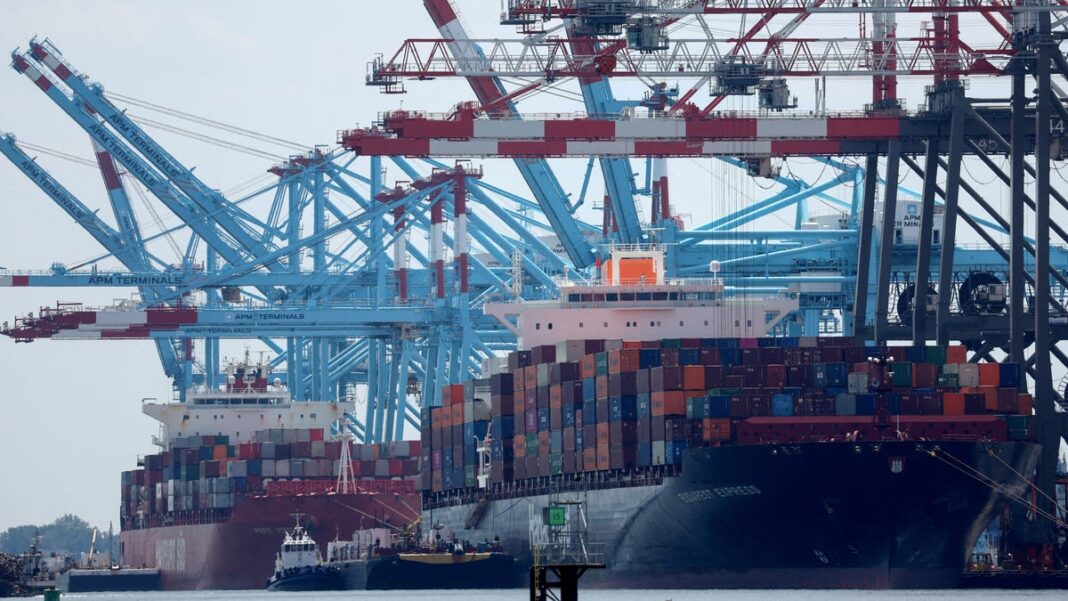Dock Workers Along the East and Gulf Coasts Go on Strike, Raising Concerns About Inflation and Supply Shortages
Dock workers across ports from Maine to Texas went on strike at midnight when they could not reach a new labor agreement.
Nineteen ports on the East and Gulf Coasts have come to a standstill as 45,000 union members ceased work after negotiations between the International Longshoremen’s Association (ILA) and the United States Maritime Alliance (USMX) broke down. This strike adds to the already existing temporary port closures in regions like Florida, the Carolinas, and Georgia due to Hurricane Helene.
This marks the first strike at these ports since 1977, potentially costing the economy up to $5 billion each day. It could disrupt holiday shopping for millions of Americans and determine the financial success for various small to medium businesses and farmers this year, experts warn.
According to Stamatis Tsantanis, chairman and CEO of Seanergy Maritime and United Maritime, “Every day a ship sits idle at the port is a loss of revenue, which ultimately affects consumers.”
Duration is Crucial
As the strike unfolds, experts are focusing on its potential length. Some economists estimate that each day the strike continues could cost the economy around $5 billion due to hindered imports and exports.
Jonathan Gold, vice president of supply chain and customs policy at the National Retail Federation, noted, “It’s not only about the shutdown but also about how long the recovery period will be once operations resume.”
Gold explained that for every day of the strike, normal operations could take three to five additional days to restore due to the backlog. He cautioned, “The longer the strike lasts, the more complicated the situation becomes.”
A similar port strike in 2002 lasted 11 days before the Bush administration invoked the Taft-Hartley Act to mandate the reopening of ports. This Act gives the federal government the ability to seek a court order against labor stoppages to allow both sides to negotiate during an 80-day cooling-off period. According to Gold, recovery from that strike took six months.
While several industry groups have urged for government intervention, the Biden administration has stated it won’t utilize the Taft-Hartley Act. Instead, they are promoting ongoing negotiations and have asserted they will closely monitor supply chain disruptions, ready to act rapidly to mitigate any significant interruptions that may arise due to the lengthy strike by engaging comprehensively with ports, local and state authorities, as well as industry representatives, labor unions, and transportation companies.
Impact of the Strike
Imports: As approximately half of the U.S. ocean imports flow through the East and Gulf coast ports, various products could be affected, including fruits, vehicles, automotive and machinery components, apparel, medicines, beverages, holiday items such as toys, and seafood, according to experts.
Eric Clark, portfolio manager of the Rational Dynamic Brands Fund, warned, “If the strike extends beyond a week, it could lead to product shortages just in time for the holidays. Retailers currently have minimal inventories, which means they could quickly run out, causing shipping costs and product prices to surge. This situation might bring inflation rates similar to or worse than last year’s peak levels for up to six months.”
Small and medium-sized businesses may face the most significant challenges.
According to Ben Johnston, COO at the small business lender Kapitus, “Large companies were probably prepared for this strike and have stocked up on supplies financed through cheaper loans. In contrast, small businesses likely couldn’t purchase large quantities in advance.”
Exports: Internationally selling businesses will also be impacted. Producers of soybeans and poultry could find it challenging to export their products, risking the loss of market reach, especially as their goods can spoil, experts warned.
Jobs: Companies maintaining lower inventory levels to minimize expenses may have to halt production lines if the strike persists, adding strain to a job market that is already displaying signs of cooling.

